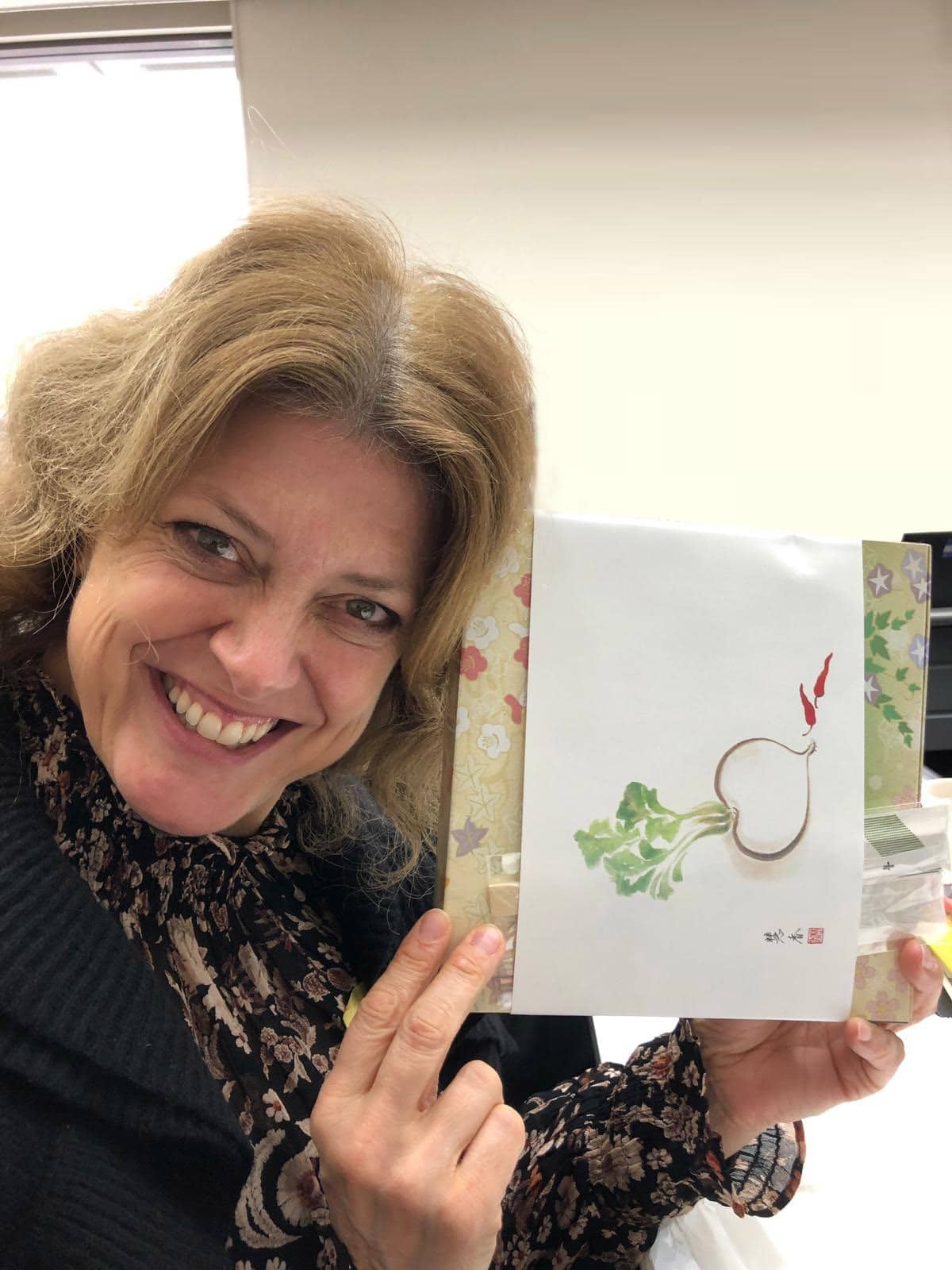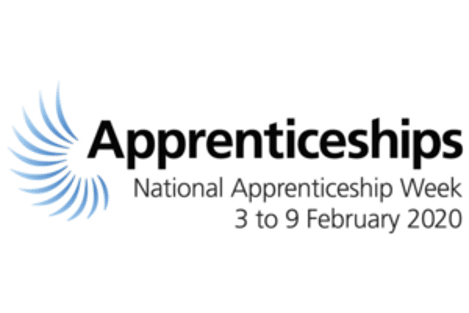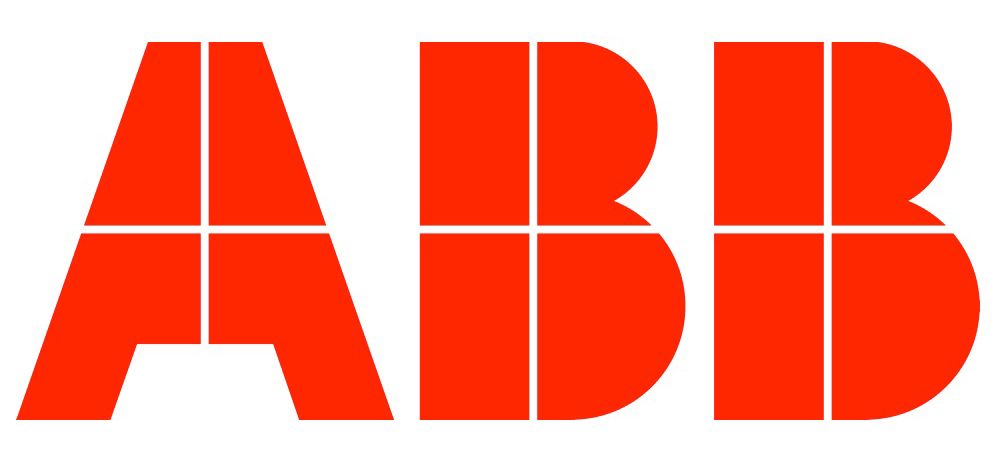From Apprentice to Marketing Specialist – National Apprenticeship Week 2020
It has been three years since I completed an apprenticeship with the Napier Group, and I have recently hit 4 years of working with the agency. As each year passes and the National Apprenticeship Week dawns, I often reflect on how my apprenticeship allowed me to blossom into the Marketer I am today. In this blog I thought I would share my perspective on how an apprenticeship helped kickstart my career.
When I completed my A-Levels back in 2015, I wasn’t certain about what I wanted to do, or where I wanted to go after Sixth Form. I then applied for an apprenticeship at Cambridge Regional College and since then, I haven’t looked back. My progression throughout the programme really gave me the boost I needed to develop critical skills needed in a professional environment.
I chose the apprenticeship path over University, and I strongly believe that it was the right decision for me. Armitage gave me the opportunity to develop my marketing skills and gain valuable career experiences in a real working environment; something I didn’t think was possible at such an early stage. Still today I am grateful for the time and training the company dedicated to my development during my apprenticeship.
During my time as an apprentice, I was able to build my reporting and Microsoft office skills as well as build relationships with clients and work on various exciting B2B marketing campaigns.
In 2017 I became a Marketing Specialist at the Saffron Walden office, and continued my education with the CIM Certificate in Professional Marketing at Cambridge Marketing College. I still continue to learn new things here at Armitage, but my apprenticeship will always remain as one of my highlights.
An apprenticeship worked for me, and I would definitely recommend the programme to anyone looking to make the first step up into a worthwhile career.
A Day in the Life of an Account Manager
At Armitage Communications, we’re keen to share with you the different roles we have within the team. From Account Directors through to Marketing Specialists, we have a range of people performing a variety of tasks on a daily basis.
In this blog, we’ll share with you Rose’s typical day. Rose started in PR over five years ago as a Junior Account Executive and is now a Junior Account Manager.
Morning:
When I arrive in the morning, the first thing I do is check my emails for any urgent items which need to be addressed immediately. I then look online for any news relevant to our accounts, especially around robotics and automation technology, logistics and telecommunications.
It’s difficult not to get sidetracked into reading too much of the news - but also really important to get an overview of what is happening in the industries to provide context for our campaigns and articles.
Next I check in with the members of our Robotics, Telecommunications and Logistics teams to make sure we are all aligned on the high priority items of the day. If there are any difficulties across any projects then I have to think carefully about what the next best action is to take. More often than not it takes a small change to resolve a challenge, which in the moment can feel enormous, but usually it’s a small part of the overall picture and once addressed, it’s on to the next project. If I’m really stuck on what to do, then I can ask an Account Director.
Often the next project will involve writing of some kind. It could be a blog, feature article, opinion piece, case study or script. Depending on the content specifications, it could take up to eight hours to research, plan and draft the piece, or as little as half an hour.
Afternoon:
In the afternoon, I could be pitching features to editors, setting up press release distributions or spending some time on a Skype call with a client to run through briefs for content, events or campaign strategy.
As an Account Manager, it’s my responsibility to ensure that my clients are well represented in the press and that all content aligns with their key messaging. Usually I will scan the media packs for relevant features to pitch for. Common features I’d go for include ‘Digitalisation in food manufacturing’, or ‘How to address the skills shortage,’ through to “Warehouse automation’ and ‘Robotics’ across a range of magazines including Controls, Drives and Automation, Logistics Manager and Food & Drink Network UK. There are lots of nationals which occasionally feature relevant news which we can re-actively pitch against - recently we got a client a piece of coverage in the Times!
Either myself or the Account Executive will draft a synopsis for the article and email it over to the editor. We usually wait a few days before calling to follow up (unless it's a reactive pitch of course, in which case we have to be super quick before the news is no longer relevant). If the editor is interested in the content, then we’ll find out the deadline, word count and any images they’ll need and make sure we note this to remind ourselves to deliver on time.
The brief for the article will be outlined to one of our writers unless we have time to write it ourselves. Then once drafted, the article is sent to the client for approval before submitting to the editor along with any images they need such as headshots or real-world examples of the product in action.
During the day I can often have a Skype call diarised, and I make sure to prepare in good time. I read through any attachments or notes in the invite, and write out any questions beforehand that I anticipate I will need to ask to glean the relevant information from the client to execute the project effectively. These 30 minutes to an hour of preparation time are what can make the difference between quality Account Management and last minute, rushed Account Management which can lead to lots of revisions and a frustrated client.
The fewer the revisions, the better the value.
Towards the end of the day I review the items I have completed and mark them as done on the work in progress (WIP) sheet. I also consider what projects will need to be completed the next morning. Having deadlines set against each project in the WIP helps to inform my priorities and leads to a much higher client satisfaction rate as this kind of attention to detail and organisation means the work is delivered in good time.
If I had to sum up what the role of Account Manager requires in a few words, I’d say flexibility, problem-solving abilities, creativity and a passion for nurturing positive client relationships. It helps when you enjoy the accounts which you work on, and have an interest in the subject matter, which I definitely do.
Did I mention I love robots?
If this sounds like a role you’d enjoy and you’re interested in potentially joining us, send your C.V. to debbiem@napierb2b.com.
Five trends in industrial robotics that are helping to transform manufacturing
Today a Meltwater search of ‘robotics’ headlines tallies 24 results across 12 titles including BBC News, Financial Times and HR magazine. We’re dedicated to following the robot trends across all industries - whether it’s AI being used in finance or robot skeletons being used to help paralysed patients walk again. However, as an agency we are particularly focused on the manufacturing industry where many of our clients are helping UK companies to achieve faster and more flexible production.
There are a number of areas where robotic technology is developing at a rapid rate due to a demand for greater flexibility and speed. It was difficult to come up with only five because there are many different industries within UK manufacturing that have all got the potential to use robots. Nevertheless, we managed to narrow it down. Here are the five that we think are the most exciting to track right now:
Collaborative robots
Initially collaborative robots conjure up visions of smaller robots working alongside people. There are a number of models which have been developed to bring the collaboration to many new areas of production such as electronics, pharmaceutical and automotive as well as small to medium sized manufacturers or workshops. Some of these are able to react to potential collisions and others are ergonomically designed so that if a collision occurs they won’t impact the co-worker.
Lesser known collaborative robots are the large-scale industrial sized robots which are fitted with sensor technology so that they can stop before a human gets within a certain radius. There are even researchers who are exploring code which make robots interact closely with humans - see Madeline Gannon’s work here.
If larger robots are able to collaborate with us, then we could be lifting cars with a wave of our hands in no time.
Machine tending
Robots are able to be adapted into different configurations according to the needs of a customer. In the machine tending industry, there are many different end tools required and robot manufacturers are creating cells which are especially adaptable for this purpose.
There is also a growing skills gap. In this industry many companies are introducing robots to perform the manual loading and unloading so that the skilled employees are able to use their expertise to perform other work steps.
Digital maintenance
With the advent of smartphones and 4G, the possibilities for maintenance engineers, factory managers and CEOs to communicate with elements around the factory floor has expanded. When 5G lands, expect more possibilities. But for now, we are able to share with you that remotely monitoring robot performance is a thing. This is achieved using data analysis and as robots are basically told what to do via a form of data (code), it is possible to analyse this data and provide insightful statistics such as how fast the robots are performing and how many parts have been processed.
A lot of us are getting used to analysing data in the form of social media analytics, for example - if there can be this much insight into engagements on smartphones to drive changes in the way we interact with each other, then analysis of robotics performance could mean great changes for the way that manufacturing is performed - and all at the tap of a screen.
Warehouse logistics
As many of us are ordering goods online whether it’s new clothes or a new sofa, warehouses are having to quickly adapt to manage all of the incoming orders. Warehouse automation has become the differentiator for many online brands. Leading names Ocado and Amazon, for example, have invested heavily in robotic technology. Ocado even has its own innovation department within which they are developing their own robots.
As more of us come to rely on shopping being delivered to our door, greater numbers of warehouses are going to need robots to maintain their position in the market.
Here’s a video of Ocado’s robots in action: https://www.youtube.com/watch?v=4DKrcpa8Z_E
Food and beverage
As food trends proliferate from veganism and vegetarianism through to the paleo diet and sugar-free, the demand on food and beverage brands to continue to churn out relevant products means flexibility is key.
Robots are adept at providing flexibility. They can pick, pack and place products using vision technology which recognises various shapes and sizes. It all comes down to the programming - which is taking less and less time thanks to innovative programming software. Robots also bring the speed - so if a confectionery brand needs to release a timely limited edition chocolate bar, they can do so without too much hassle.
To understand more about what robots have to offer the food and beverage industry, watch this video from Wired https://www.youtube.com/watch?v=SKBHnbYo-4s
Five good reasons to consider apprenticeships
With the tendency of many schools to focus on academic qualifications as a route to a good career, the value of vocational education is often overlooked. This is a shame, because vocational qualifications and training in the form of apprenticeships can often provide a valuable foothold into the real world of work, equipping young people with skills and experience learned literally ‘on the job’.
In this article, we look at five great reasons to consider apprenticeships and explain why vocational qualifications can offer an equally valid alternative to their academic counterparts even up to degree level.
Reason 1 – You learn by doing
While classroom-based teaching suits some people, it can often be a turn-off for those with a more hands-on approach to learning. Vocational qualifications and work-based learning provide the opportunity to discover not just why things work in theory, but also how they how they work in practice. Especially when training is conducted in the workplace, there is the opportunity to learn from the very best teachers – the people who do the task as part of their actual daily job – and to gain honest and informed feedback on your performance.
In many cases, this will entail working alongside people from different backgrounds, age groups and education, introducing an added dimension of interpersonal skills training that can prove invaluable in later life. The ability to communicate with mixed groups of people, for example, is a key skill needed in management, which is why you will often find many senior managers in many different walks of life who started their careers as apprentices.
Reason 2 - Find out what you want to do – and what you don’t
Getting hands-on into a role is a great way of realising that the lifelong ambition you’d been aiming may not be your true calling in life. Steve Wilding, now Field Sales Manager for ABB Measurement & Analytics in the UK and Ireland, sees his apprenticeship as the starting point for his career in engineering sales, after originally having wanted to be a draftsman.
Says Steve: “I was lucky enough to get an apprentice technician role with Vickers, which at the time manufactured electric motors for aerospace and defence applications. At the start, I saw this as a great way of fulfilling my ambition of becoming a draftsman.”
“However, after having worked in several positions around the company, including positions on the factory floor, I realised by the time I got to the design department that I was much more interested in other areas of the company’s activities. Luckily, my apprenticeship gave me scope to choose something else - had I come in straight from school or university, I may well have ended up being stuck in a role I didn’t like.”
It was also Steve’s experience as an apprentice that gave him his next role, which led to the start of a life on the road from which he has never looked back.
“After working in internal sales with Vickers, I took a position with Bourdon, a French manufacturer of instrumentation equipment, becoming sales office manager within a year and then going on the road as a sales engineer. It is this role that really laid the foundations for my career with ABB and a job that I really love doing.”
Reason 3 – Get ahead

While university degrees are often touted as the passport for high salaries and quick advancement, there is no real substitute for experience.
Some of the UK’s most prolific business leaders started as apprentices. Consider, for example, JCB Chairman, Lord Bamford who as Anthony Bamford, started his career as an apprentice for agricultural machinery manufacturer Massey Ferguson. Or Andrew Reynolds Smith, previously CEO of GKN Automotive and now CEO of engineering company Smiths Group, who began his working life as an apprentice for Texas Instruments.
Furthermore, contrary to popular belief, apprenticeships aren’t just limited to the engineering and manufacturing sector. A wide range of professions, from entertainment through to fashion and cooking, offer their own versions of apprenticeships giving candidates the opportunity to gain valuable hands-on experience.
Famously, Jamie Oliver, Gordon Ramsay, Karen Millen, Stella McCartney and even Sir Ian McKellen all started as apprentices in their respective fields, rising through the ranks to become leading names. Some, such as Jamie Oliver and Gordon Ramsay, have even started their own apprenticeship programmes to encourage future generations.
It is also often the case that many people who undertake vocational qualifications and apprenticeships are ahead in their careers by the time their academic counterparts emerge from university. This can provide not just a financial advantage, but also the advantage of accessing opportunities to work in roles in other companies that would not be available to a newly-qualified graduate.
“Not long after finishing his apprenticeship, one of my friends was headhunted by Boeing in the US to work as an interior designer for its aircraft,” says Steve Wilding. It was his four years of experience as an apprentice that gave him this opportunity – a big step for someone still in their early twenties.”

Reason 4 – Earn and learn
The prospect of leaving university laden with tens of thousands of pounds of debt to repay tuition fees is leading many school and college students to rethink their life choices. As a way of both learning and earning, apprenticeships can offer an attractive and worthwhile alternative career path.
One of the biggest benefits of an apprenticeship is the opportunity to earn while you learn. Wage rates vary according to age, with the average wage for an apprentice starting at £3.70 an hour for those aged 16 to 18, £5.90 for those aged 18 to 20 and £7.83 for over 25s. In many cases, there is the prospect of pay increases as time goes on, with rates tending to increase once the first year of training is complete.
In terms of qualifications, apprenticeships offer a great way to combine work with study, with the chance to earn valuable qualifications. Depending on the length of the apprenticeship, candidates can progress from Intermediate level (Level 2), equivalent to GCSE, through to Higher or Degree level (Level 4,5,6 and 7), equivalent to a Foundation, Bachelor or Master’s degree. In addition to providing direct work experience, apprenticeship programmes also incorporate a study element, typically involving day release at an associated college.
Most importantly, unlike university education, there is no repayment expected at the end of the experience. All fees are covered by the employer and the Government. Once the apprenticeship is complete, subject to positions being available, a qualified apprentice can either remain with the organisation they trained with or move on to find other opportunities.
Reason 5 - Make lifelong friendships
In the same way that many people who go to university create lifelong friendships, the same is also true for apprenticeships.
Says Steve Wilding of ABB: “The best thing about doing an apprenticeship is that you’re all in it together. For example, I had friends doing apprenticeships with other companies – to get an idea of what each other did, we would spend time visiting each other’s companies, which gave us a great insight into different ways of working and doing things.
Even though it’s now 28 years since I did my apprenticeship, I’m still in touch with many of my fellow apprentices, many of whom I still meet up with on a regular basis.”
Interested?
If reading this article has helped spark your interest in becoming an apprentice, there are plenty of advice sites available with more information about how to take the next step. The following are examples of some sources of information that may help:
UCAS Apprenticeships page – Everything you need to know about apprenticeships in the UK, with a breakdown of opportunities and schemes by region
GOV.UK page on becoming an apprentice – The UK Government’s page on becoming an apprentice is a good starting point for finding out more about what’s involved and how to prepare yourself for an apprenticeship
The Apprenticeship Guide – A complete step-by-step guide to apprenticeships, containing the full what, how and why of becoming an apprentice and a full list of opportunities by region and industry sector
Get my first job – enter your location and specify which industries you’re interested in to find a choice of suitable apprenticeship opportunities
Inbound Marketing: 5 Tips for Success
Marketing strategies tend to come and go, but Inbound marketing has proved that it is here to stay.
Even after a decade in the marketing world, inbound marketing is perceived as a ‘revolutionary’ concept; viewed as a strategy that works, it delivers excellent results for companies who have taken the plunge and adopted inbound marketing into their marketing strategy.
However, like most strategies, inbound marketing is not exempt from being reviewed; and marketers should evaluate their tactics regularly to ensure they are producing the results you need.
At Napier, we understand what is required to ensure you implement a successful inbound marketing strategy; so, we thought it was only right to share the following 5 tips to ensure your inbound marketing is a success:
Keep Your Content Fresh
Content is the most important aspect of your inbound marketing strategy, but with time limits, and everyday pressures, it can be challenging to keep up with a content schedule. Often this means marketers fall into the habit of repeating posts, resulting in readers seeing the same content again and again.
It’s important to have variety in your content, and although writing new tip sheets, or whitepapers are good, not all content creation needs to be time consuming. A key way to keep your content fresh without spending lots of time, is repurposing content you already have.
Take an interesting and popular blog post. What’s stopping you from turning it into a SlideShare? Or repurposing it as a video? You’ll be surprised by the amount of great content you already have, which is ready and waiting to be re-purposed.
Position Yourself as the Industry Expert
It can be easy to forget that the people searching/reading your content are trying to solve a problem.
For inbound marketing to be a success, you need to create content that captures the attention of your leads, by pre-empting their questions and providing them with the answer to their problems.
You should always write content with your clients/potential clients in mind. What do they struggle with? What are the key problems they have faced in the past? By identifying these issues, and more importantly addressing them in your content, you are instantly positioning your company as the expert in the industry providing the answers the reader is looking for.
Make it Easy for Customers to Contact You
This may seem like an obvious tip, but it is often overlooked in making sure your website makes it easy for people to understand what it is you do and how to contact you.
For example, if your website is your primary source of inbound opportunities, getting in touch with a real person should always be one click away on any page of your website.
If a potential customer is on your website and struggles to find a way to contact you; whether this be via email, phone, or social engagement, you create the risk of losing a qualified lead within seconds.
To avoid this, make sure you have clear CTAs on all key pages of your website directing the visitor to your contact information. Or even better, make sure a clear email address and phone number is featured on every page of your website, by including this information on the footer of your pages.
Increase Inbound Visitors to your Site with SEO Strategies
Put yourself in your prospect shoes, they are requiring a solution to a problem and the first thing they will do is turn to Google.
It is vital that you are properly optimizing your website and content, to increase organic search traffic. By effectively leveraging search engine optimization, targeting high traffic keywords, and analysing data trends, you’re positioning your website and brand higher in the search engine results, increasing your online visibility to inbound visitors.
Don’t Forget to Nurture Your Leads
Often marketers are so focussed on using inbound tactics to attract people, they can forget one crucial element – nurturing your leads.
It is important to remember that once a lead fills in a form or downloads a piece of your content, you need to follow up through email or calling to qualify and nurture the lead.
With Marketo revealing that a massive 96% of visitors viewing your website aren’t ready to buy; lead nurturing is vital in helping your leads through each stage of the funnel, (whether this be through email marketing, lead scoring or list segmentation) until they are in a position to buy.
It can be a tough job to ensure your inbound marketing strategy is running smoothly and successfully; but by utilizing these top five tips, your company will be on the right path to inbound marketing success!
Yokogawa IA's Maaike Goinga - Marketing Expert Interview

- What do you like to do in your spare time (hobbies)?
This year I became a Yoga teacher as it is my hobby and one of my greatest passions. Yoga also gives me the balance I need between my busy work life, and relaxing in my own time.
- What is your favourite book?
‘A Little Life’ by Hanya Yanagihara- a great story about friendship. I read it last year and it really stood out to me.
It’s about a group of friends and how their friendship grows, and it really highlights their respect for one another. The friends take different paths and careers in life, some more successful than others, but their friendship never dies. There is one person that is very vulnerable and never speaks his heart, but everyone is so touched by him. It’s a very fascinating book. I believe Melanie at Peter Bush Communications has also read it.
- What other career would you have chosen if you weren’t in marketing?
I don’t know if I would be in another career other than marketing. It is one of the many things I love, including art and history. Sometimes I dream of having a gallery of my own or even going back to studying. But then there is also Yoga; I could imagine myself having my own Yoga school.
- What do you think have been the biggest changes to B2B marketing in the past 3 years?
I do think the speed of everything has increased over the past few years. For example, the development in technology and how there is now far less patience to get copy/content out there in the market! The market is definitely transforming with the growth of the internet and use of techniques such as marketing automation. Sometimes it gets hard to keep up to date with all the latest information, especially social media, with all the different touchpoints and channels being developed.
- What do you think is the most effective and least effective method of marketing?
I think to be effective in marketing you must be consistent across all your touchpoints with customers and target audiences. Ultimately if you don’t bring consistency and authenticity your brand won’t be associated with how you want it to be, and you will not make a difference.
I also think in this vastly developing digital world, people think that all things digital are ‘the golden bullet’, when in fact I don’t believe that. I do think that digital activities should be linked with some element of face-to-face contact as well, which people now often forget or dismiss. If your business misses out on that human interaction, you are likely to hit those consequences and not achieve your goals.
- If there was one thing you could change about how agencies work with you, what would it be?
For me, I think it works well when we can come together face-to-face, so we can really make a mark. As I work outside of the UK, Yokogawa and Peter Bush Communications often talk over the phone and through email, and we can achieve plenty through those platforms, however, things crop up from time to time which can be forgotten, so it’s great to come together to make a bigger impact, although we cannot spend our lives travelling!
- Can you explain how you define and measure success for your campaigns?
Depending on the type of campaign, success can appear in different forms. If you have set your objectives clearly before the start of your campaign you can measure the behaviours and buying habits of your customers.
- If there was one wish you could make to improve your company's marketing activities, what would it be?
Being in this business is all about the people who I meet and work with. I would really like to see all our people at Yokogawa get a voice in our campaigns to make our professional company approach seem more human.
I believe having more of a human aura to the company to solve customers’ issues, would be appreciated by our customers. They would trust our company more as they know more about the people behind our company. That would be my ‘genie in a bottle’.
HARTING's Natasha Sephton-Pike - Marketing Expert Interview

- What do you like to do in your spare time?
I love to go on walks with my dog, Raspberry Beret (yes, she is named after the Prince song). The muddier and wetter the better is her motto!
- What music do you like?
The dog’s name gave this away; I am huge fan of Prince. He was an artist I grew up listening to and I just fell in love with his songs, his clothes and his voice! His performances and lyrics just blow me away. He truly was one of a kind and paved the way for many other artists to come.
- What other career would you have chosen if you weren’t in marketing?
I would probably have worked in some form of caring capacity, either with the elderly or disabled adults. I enjoy caring for people and helping to enrich their lives, the elderly is a section of society that can often be overlooked and not heard, which is really quite sad. I try to support elderly people in my local community and getting involved with organisations such as Contact the Elderly are a great way to help.
- What do you think have been the biggest changes to B2B marketing in the past 3 years?
- Big data opportunities
- Social media
- Changing audience demographics – particularly in an environment marketing to engineers, the skills gap here presents a unique challenge for how we communicate across this wide split in age and experience.
- What do you think will be the biggest change in the way you approach your campaigns in the next 3 years?
Data driven marketing campaigns to support our customer journey - incorporating our historical learned data about our customers and their interactions with us with external market data to produce tailored material across multiple channels, delivered to the right people at the right time.
- What are your 3 biggest marketing challenges?
- Time to stop and think and celebrate – As marketers, we can often be stuck in the role of project planning and execution, always under time deadlines and running from one project to the next. We find it hard to stop and think ahead; think freely and creatively but also to celebrate our success.
- Evaluating “the latest marketing trend” – What could help us, what is noise? It can be difficult to decipher the value from the noise with new technologies, tools and methodologies developing all the time. As a busy marketing department, understanding and testing what can help you be more efficient and effective is a tricky challenge.
- Proving marketing value – Having systems and processes in place companywide that supports the journey to linking marketing campaigns and interactions with sales. The marketing department must own this ROI project but need support from all areas of the company who are customer facing to truly get a clear picture of the customer journey and how marketing plays it part.
- What do you think is the most effective and least effective marketing activity you, or your company, undertakes (in terms of ROI)?
It is difficult to say, all our activity supports the overall goal of achieving a positive ROI. Some channels we use are easier than others to measure KPIs against such as digital trade press advertising, email marketing and website performance. Other activities such as PR, printed trade press and to some extent exhibitions, can be harder to measure KPIs against. Recording which touchpoints our customers interact with along their journey is the most important ROI activity that we do, we can see the whole picture, not just a snapshot of the quick and easy KPIs we can measure.
- Can you explain how you define and measure success for your campaigns
For each campaign we have a series of goals and supporting KPIs to measure how well we have achieved our goal.
- If there was one wish you could make to improve your company's marketing activities, what would it be?
Greater customer and industry research to support a deeper understanding of our customers and to deliver improved tailored content.
Getting the Pitch Right…
An effective pitch email has a huge influence on whether you gain valuable coverage for your press release or not. Knowing how to pitch your press releases to the media is an art which can reap bountiful rewards. It is a skill which may take some time to develop but investing the effort can be a game changer for you and your business.
Building relationships and trust are key factors to gaining acknowledgment of your emails. However, there are other, quicker ways in which you can dictate how an editor will react to your press release.
Before you even start typing out your covering message, have you thought about; visual formatting, tone of voice, or even the quality of your content? If not, it’s time to change tactics.
Editors have very little time and receive dozens of press releases every day, so we should be respectful of this. Yours is just one waiting in a queue to be read and either snapped up or discarded. You have just a couple of seconds of their valuable time in which to convince them to run your story. Be concise, straightforward and to the point.
Therefore, it is essential that you do all you can to capture their attention and stand out from the crowd. If you have not done that by the time they finish reading the headline and the first few sentences, the likelihood is you have failed, and your release is with the others- in the delete basket.
Editors rarely read to the end of a press release – but they will if you pitch it properly in your email.
First of all, ask yourself the following questions:
- Is the email something you would want to receive?
Think about it- is the email something you have thrown together in just a couple of minutes? Does it sound too much like a sales pitch? Your email copy is as important as the press release, take the opportunity to present your content in a polished and formatted way which really grasps the journalist’s interest.
- Have you addressed the intended recipient?
Be authentic. Personalising your emails with a contact name or magazine title can not only increase your email open rate, but also establish trust and good relationships for the future. Tailoring your email highlighting how your product fits with the publication, story or subject will show them value and will encourage them to read on and cover your story. You should also make sure that your news is relevant to each contact you send to in order to avoid spamming inboxes.
- Is the subject line compelling?
Did you know that 47% of people decide whether to open an email based on just the subject line alone? Highlight your company name and aim to capture their attention.
- Have you included a teaser of the press release in the main body copy?
Ultimately the journalist is looking for relevant and news worthy stories. Let them know what to expect prior to opening your attachment with an interesting short summary. Be honest, and be upfront with what you are asking for, do we want them to cover the press release? Would we like them to test a product sample? Do we want a briefing call? – this will help the journalist understand your expectations straight away.
- Are all of your attachments you wanted to include really attached?
Don’t forget to attach that supporting image, or even your press release! Forgetting to do so could seriously damage your reputation.
Finally, let the recipient read and digest the information you’ve just given them. Picking up the phone minutes or even seconds later and asking if they received your email will only cause irritation.
In summary, how you deliver your press releases is the make or break of your news. Take the opportunity to make your pitch the best it can be before you hit that almighty send button!
At Napier, we specialise in media relations and our long-standing relationships enable us to craft great pitches to increase your news coverage, whilst delivering your key messages.
Client Case Study: Interview with an astronaut
Using the universe as a theme to promote an event may seem grandiose. However, when the challenges of reaching a particular target audience are considered it’s a little more understandable. Getting the right mix of communication tools could be compared to selecting the right crew for a mission into space, and the key note speaker at our client’s conference was lucky enough to be one of a select few who have made it there, to infinity and beyond.
Michel Tognini, born in France on the 30th September, 1949 made his first journey into space on 27th July 1992. He knows a thing or two about how important communications are, whether they’re between a client and their delegates or between a spaceship and mission control on Earth.
Thus, it was clear that Michel would be the ideal representative for our client to anchor their potential delegates. Of course, the next question was how to spread the message loud and clear. Drawing on Michel’s extraordinary experiences in the form of an interview seemed to be the answer. To be placed in the customer’s magazine, the aim was to secure substantial interest in the topic, and through this higher attendance at the conference.
Start the ignitions
Using our in-depth knowledge of the client’s products and services as well as the communications market enabled us to devise questions that would support the conference themes as well as uncover Michel’s own views of his experiences. For example, ‘What back up comms did you have during spaceflight?’ encouraged him to consider exactly how important communications were in securing his crew’s safety during their Columbia mission.
Researching Michel’s background and space travel experience was therefore fundamental to this campaign. Discovering the major problems that affected his Space Shuttle launch was both fascinating and humbling. To convey this to the audience was of significant value; garnering their curiosity was a sure-fire way of encouraging attendance.
Prepare to launch
The more challenging aspect of the project was deciding which information obtained in the interview was relevant for the piece. Creating an article which was accessible to a wide audience was important to us. Knowing the readers would be knowledgeable about communications technology but wouldn’t necessarily know much about the ins and outs of space travel, our Account Director left out some of the more detailed technical descriptions about the launch. Instead, he focused more on Michel’s comments which conveyed his excitement and wonder at being able to travel in space.
An interesting fact that Michel shared with our Account Director was that at one point during the mission, an electrical fault hit the Space Shuttle. All the lights in the cabin went out, which must have been very dramatic, and really quite scary. This information hasn’t been mentioned in any of the online documents covering the incident.
Mission complete
The interview was published in the customer magazine and featured on the front cover as a key anchor to tempt readers in. Once the audience became engaged with the interview, the likelihood that they would attend the conference became significantly higher. Their interest in the key themes of the event was stimulated through a fascinating tale of space, communications and mission control, encouraging their curiosity to find out more by attending the conference and hearing Michel Tognini, an ex-astronaut, speak in person.
ABB Case Study: No detail too small....
We always like to go to town when it comes to making our clients look good. And what better way to promote the use of your client’s products around Central London than an open-top bus tour of the capital itself?
This is exactly what we did as part of ABB’s recent Capital Markets Day event, which brought journalists from around the world to London to find out more about the company’s ambitions for the next five years.
Taking our idea from the popular open-top tour buses that are a ‘must-do’ for any tourist, we put together our very own whistle-stop tour of our client’s major reference sites.
Here’s a quick look at how we quite literally put our client’s products on the map.
From brainstorm to bus stop…
Did you know that buses are prohibited from travelling down the Mall? Or that there are 26,000 streets within a six mile radius of Charing Cross?
These were just some of the things we discovered as we put together both the route and the double-sided map that would be the focal point of the tour.
DID YOU KNOW? The Routemaster celebrates its 60th anniversary this year?
The destinations were easy enough to choose, but it was allowing for road closures and traffic congestion which proved a challenge.
Just in case Plan A went awry, our MD, ever the perfectionist, cycled the provisional route two weeks before, duly noting the details of every road work, one-way street, prohibitive by-law and anything else that could affect the route.
Making the map
That being done, a route was finalised and a map painstakingly produced, drawing on a variety of sources for its inspiration. For several days, our studio was awash with maps including the famous London A to Z, London tour guides and Dorling Kindersley pictorial books, trying to fit as many details as possible into the A2-sized format.
| Click to view large version |
The design team’s contribution didn’t stop there, with invites also made to ensure that the journalists were clear on how to get to the bus stop on the morning of the tour. These featured the iconic Tower Bridge image for both consistency and effect.
Next stop: The tour
Starting at The Gherkin, where ABB switchgear controls the dual power supply, the tour took in a variety of some of London’s most famous landmarks where ABB equipment has been installed, including Tower Bridge, The Shard, the Tate Modern, Trafalgar Square and the London Eye. Of course, no tour of London is complete without a tour guide, who was able to give chapter and verse not only on the sights of London, but also information about the ABB equipment featured in each one. We also made sure to film the whole experience to communicate the diversity of landmarks that ABB serves.
The day wasn’t limited to the Routemaster itself, as journalists were treated to a midmorning tour of Imperial College London. Recently voted as the world’s second leading university, Imperial College London is home to a new carbon capture pilot plant, which uses ABB drives, motors, instrumentation and automation to give students a truly hands-on experience of operating a real-life process facility.
After such an exciting start, journalists were then treated to a delicious lunch at Claridge’s, a hotel renowned for its timeless luxury. Not that this was the only consideration behind the choice of venue - ABB variable-speed drives also feature in the restaurant’s kitchens.
Because everyone loves a souvenir...
Finally, as a final touch to a brilliant day, the toy London bus, complete with ABB logo, was placed on each of the journalists’ tables at Claridge’s. The journalists were delighted to receive this reminder of their experience.
With cautious planning and great attention to every component of the day, the Capital Markets event achieved its objective– securing a great impression of our client’s business – providing automation and power technologies to the world’s most treasured landmarks in London.











